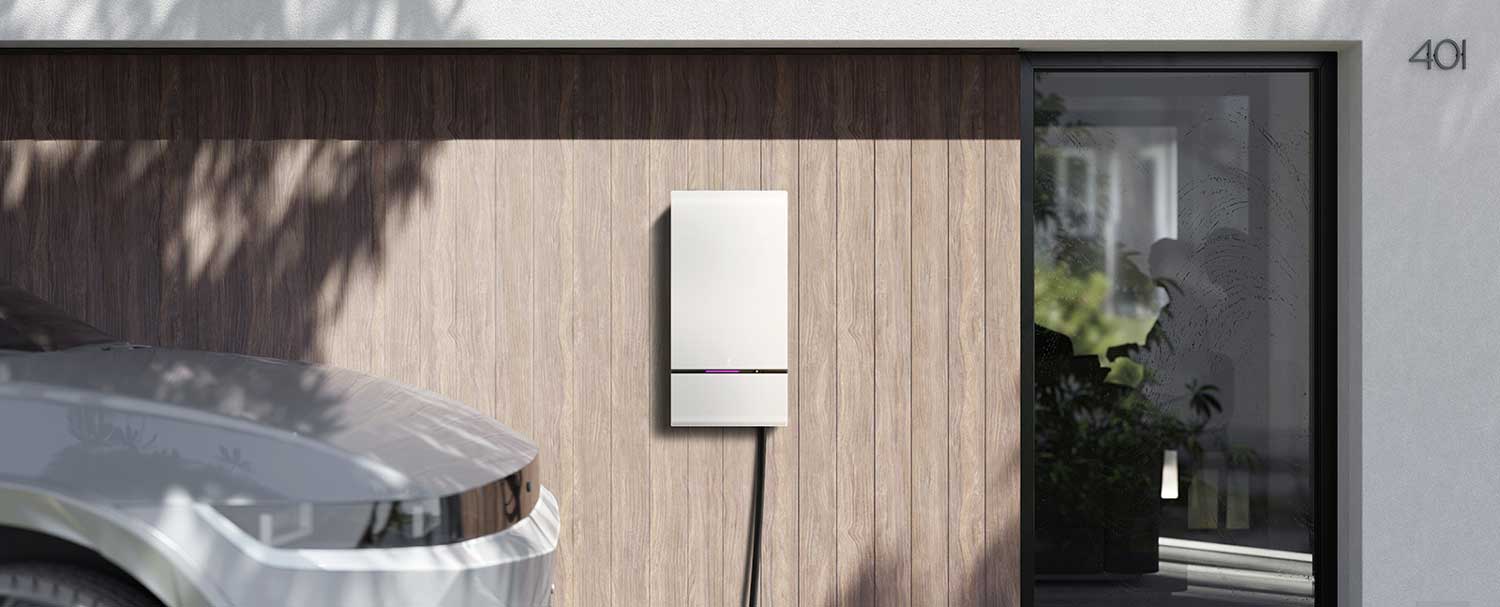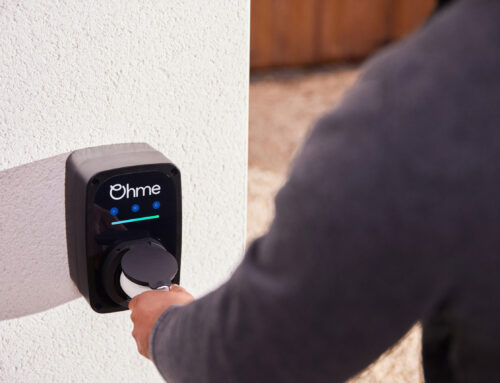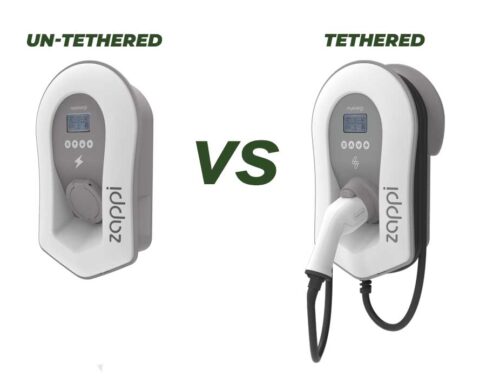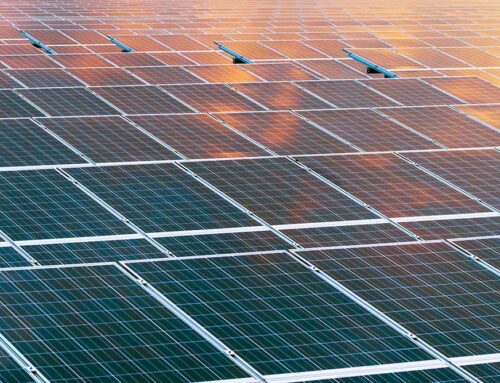IMPORTANT: Bidirectional EV Charging is not available in Ireland at the time of writing – this post is purely informative
As electric vehicle (EV) adoption grows exponentially, tech developing alongside it is not only evolving to match but has been racing toward a far more efficient and versatile EV, including advancements in vehicle-to-grid (V2G) technology. Emerging on the market is a great innovation in this regard, which is bidirectional electric vehicle charging. This technology is able to not only charge your EV but also for the electric car to generate power that can be used in a home. There are many advantages to bidirectional EV charging, including price savings, energy self-sufficiency and environmental sustainability. In this blog post, we reflect on the multiple benefits and second-layer mechanisms of bidirectional EV charging systems, including how they enable vehicles to send energy back to the grid.
Financial Savings Through Reduced Energy Costs
How Does Bidirectional EV Charging Save Money for EV Owners? This way, during the hours of high demand (generally established as peak time), prices may skyrocket and people will end up paying a lot more for the same quantity of power. In doing so, you can reduce your electricity bills quite a lot if the idea of charging your EV during peak times and using it as a backup power source in these critical moments appeals to you (More info on – Electric Charging Stations). Ireland — for example, has an evening peak hour with a significantly higher cost of electricity, which can be mitigated by using a bidirectional charger. Using this method, you can take advantage of off-peak electricity hours to charge your EV and then draw on it during peak demand times in the home.
Let us take the perspective of a household that consumes about 30 kWh/day. Peak time rates €0.24 per kWh, off-peak =€14 per kWh if you switch only 10kWh from peak time to EV usage when charging your car this will save ~ €365 a year! It’s not just the theory, for instance, trials in Dublin where households trialled time-of-use pricing schemes established these types of savings.
In addition, solar panels are being fitted by many households too so that they generate their own electricity. The vehicle battery can be charged or discharged using excess solar energy when there is insufficient sunshine, for example during the night and on cloudy days (More info on – DC Fast Charging). Similarly, the integration can turn a home into a net-zero energy household which will lower monthly energy bills.
Enhancing Energy Resilience and Security
Bidirectional EV charging also features benefits beyond just cost savings and is facilitating the improvement of energy resilience and security, especially in areas susceptible to power outages or unstable energy supply. Ireland has seen a rise in demand on the national grid particularly during spells of severe weather or unexpected faults, which highlights the importance of EV chargers in stabilising the grid. In such cases, the EV battery acts as a power source via bidirectional charging at home to maintain continuous electricity (More info on – EV Chargers Ireland).
For instance, during an outage stemming from a storm, an EV with its battery fully charged could supply basic home power for numerous hours or even days based on how the vehicle is used, showcasing the advantages of V2H systems (More info on – The Future of EV Home Charging). In theory — if you were willing to have no drive at all for four days, a Nissan Leaf (40 kWh) could power a typical Irish household using 10 kWh per day, demonstrating the potential of vehicle-to-home (V2H) technology. It is especially important for those who need electrical medical devices to function or safe and heat during winter, making reliable access to an EV charger crucial.
Other, on the other hand, investment in power technology by countries like Japan and its use in disaster rescue has been so powerful, particularly with V2H applications. Following the 2011 earthquake, Japanese automakers like Nissan and Mitsubishi lent EVs with bi-directional charging capabilities to devastated areas for emergency power use.
Environmental Benefits and Sustainable Living
Two-way EV charging programs also contribute to cleaner environments, meeting global and national agendas for a greener generation while helping EV owners reduce their carbon footprint. There is already a way to reduce greenhouse gas emissions courtesy of electric vehicles, which are lower than those produced by internal combustion (More info on – Electric Vehicle Home Charger Grant). Altogether with bidirectional charging, this of course has even greater environmental benefits.
Households can become much less dependent on fossil fuels by storing and using renewable energy more efficiently (e.g. solar or wind power). The masses of bidirectional charging in Ireland have significant value for the country, which is aiming to rapidly up renewable energy use and cut carbon emissions. The evidence seemed to show that just a bit of shift towards this technology, such as V2G, would have an amplified effect on energy efficiency and carbon reduction.
One example is bidirectional EV charging, which could serve as a key tool in helping Ireland to achieve its goal of net-zero carbon emissions by 2050 if widely adopted. Every kilowatt-hour of energy stored and reused using an EV battery is that much less demand for fossil-fuel-generated electricity, which means fewer carbon emissions, highlighting the importance of V2G systems. Also, with the advancements in battery technologies and ongoing developmental projects related to it are likely to improve all Vehicle-ownership efficiency thereby improving the storage capacity of EVs leading towards a more sustainable environment.
Grid Stability and Decentralised Energy Systems
Bidirectional charging technology represents an innovative solution to help strengthen and decentralise energy systems and support their transition towards becoming more resilient (More info on – Wireless EV Charging). Contemporary power grids rely heavily on large, centralised generation plants. While this model has worked successfully for decades, it does contain inherent inefficiencies and vulnerabilities; for example, should one go offline unexpectedly it may cause widespread power outages; furthermore transmitting electricity over longer distances can result in losses that must be factored into account when transmitting it from central plants to consumers results in power losses. Bidirectional EV charging could help address these challenges by turning electric cars into distributed energy resources (DERs). By harnessing V2G technology, these cars could act like mini battery storage plants all across the grid that can then be called upon when needed to help meet electricity supply and demand simultaneously (More info on – Electric Vehicle Chargers Ireland).
Picture a scenario where, on a scorching summer day when everyone switches on their air conditioning units causing a surge in the need, for electricity which burdens the power grid unnecessarily. In such a situation power companies could tap into the energy stored in plug-in vehicles to tackle this demand. Essentially acting as emergency power reserves.
Services, like Demand Response, can be quite advantageous for grids with energy sources such as solar and wind power that produce clean but intermittent electricity from sunlight or wind energy variations. When the generation of wind power decreases due to factors, like weather conditions or time of day the overall electricity production can also decrease. Electric vehicles have the potential to mitigate these fluctuations by storing power during high production periods and releasing it when the levels drop back down later on (More info on – Commercial EV charger installation).
Several Vehicle to Grid (V2G) trial initiatives are underway in countries to assess the potential of electric vehicle fleets in supporting grid stability efforts, in practical settings (More info on – Charging stations for electric vehicles). For example, Nissan is collaborating with Enel, a utility company, in a trial conducted in the United Kingdom where Nissan Leaf electric vehicles are being utilised to assist in stabilising the energy grid (More info on – The Future of Electric Vehicle Charging in Ireland).
In addition, to enhancing Ireland’s electricity network as a whole Vehicle to Grid (V2G) and Vehicle to Home (VTH) technologies can offer benefits at the level as well (More info on – Buying an Electric Car in Ireland). Certain rural areas with access, to grid facilities could make use of vehicles that can both take and give power as a way to store energy and provide alternative power sources in case of outages.
A rural community may opt for solar PV panels and wind turbines to generate energy locally but faces challenges when sunlight is not available and the wind is calm, at nightfall Bi-directional electric vehicles could store excess renewable energy from the daytime to power lights after sunset (More info on – Electric Vehicle Batteries). This approach can enhance energy self-sufficiency and resilience
Although Vehicle to Grid (V2G) technology may not offer a one-stop solution to the issues confronting our electricity grid system entirely, it undeniably has the potential to play a role, in shaping a cleaner and more adaptable energy infrastructure. Electric vehicles can actively engage with the grid through Vehicle to Grid (V2G) charging, delivering advantages to both the broader power network and neighbouring communities. By enabling vehicles (EVs) to store energy and release it into the grid as necessary Vehicle to Grid (V2G) technology assists in stabilising the balance between energy supply and demand enhancing the flexibility and responsiveness of the grid. It’s akin to having a network of generators placed strategically across the grid standing by to pitch in during surges in power consumption or decreases, in renewable energy generation. This strategy of using distributed energy resources enhances the resilience of the grid. Reduces its dependence, on centralised power plants. If one electric vehicle goes offline unexpectedly it’s not an issue because there are others available to compensate for the loss. In comparison in the existing system a disruption at a power generation facility can result in regions experiencing power outages. The advantages of Vehicle to Grid (V2G) extend beyond aiding the grid as a whole; Vehicle to Grid (V2G) transforms vehicle (EV) owner’s cars into valuable energy resources that can generate income by offering services to the grid network and regions, with inadequate grid systems, a group of Vehicle to Grid (V2G) equipped EVs can function as a nearby microgrid supplying eco-friendly backup power to the neighbourhood. While V2G may not be a one-size-fits-all solution, to our energy challenges it presents an opportunity for electric vehicle owners and local communities to contribute to a more resilient energy landscape. By gaining traction among utility companies and car manufacturers V2G has the potential to significantly influence the shift, towards a more eco-friendly Ireland!

Image credit: https://blog.wallbox.com/en-ie/why-bidirectional-charging-is-the-next-big-thing-for-ev-owners/
Technological Advancements and Future Potential
The future outlook of bidirectional EV charging is additionally strengthened by the state-of-art advancements in battery tech, smart grids and energy management systems to name just a few. The emergence of Artificial Intelligence (AI) and the Internet will see new horizons in optimising energy supply & storage.
For example, a smart energy management system would know when to charge or discharge best according to variables like the electricity price evolution in such time of day, synoptic forecast of renewable power production given its spatial and temporal distribution over a region (weather at your wind turbines / solar panels’ location), household requirements etc. With the ongoing evolution of technology, the value and capability to implement bidirectional EV charging will only increase, making it a key part of future energy strategies for EV owners.
Research is underway on the development of better battery technologies to maximise energy density for extended range, reducing charging times and lifetime usage for EV batteries. For instance, solid-state batteries have become a shining example of the efficiency and safety such advances could bring to our world beyond standard lithium-ion. With those technologies getting older, this will open up the potential benefits of bidirectional car charging to a wider segment of possible buyers.
Bidirectional EV charging is a complex process of using power in efficient way and reprocess it to increase sustainability. The benefits are clear — from significant cost savings by reducing energy bills to enhancing energy resilience during outages. From an environmental perspective, it thereby contributes to the objectives of both national and international policies aimed at reducing carbon footprints in pursuit of a cleaner future. So too can the role it could play in stabilising the grid and supporting a decentralised energy system. With the ongoing evolution of technology, the value and capability to implement bidirectional EV charging will only increase; making it a key part in future energy strategies. At Electric Car Charger Ireland we continually aim to stay ahead of the game here, making sure information regarding groundbreaking technology is available to everyone (whether available in Ireland or not!!).
Ever wondered about EV Charging Etiquette ….Check out our latest blog post for details. Read our latest blog post for details







